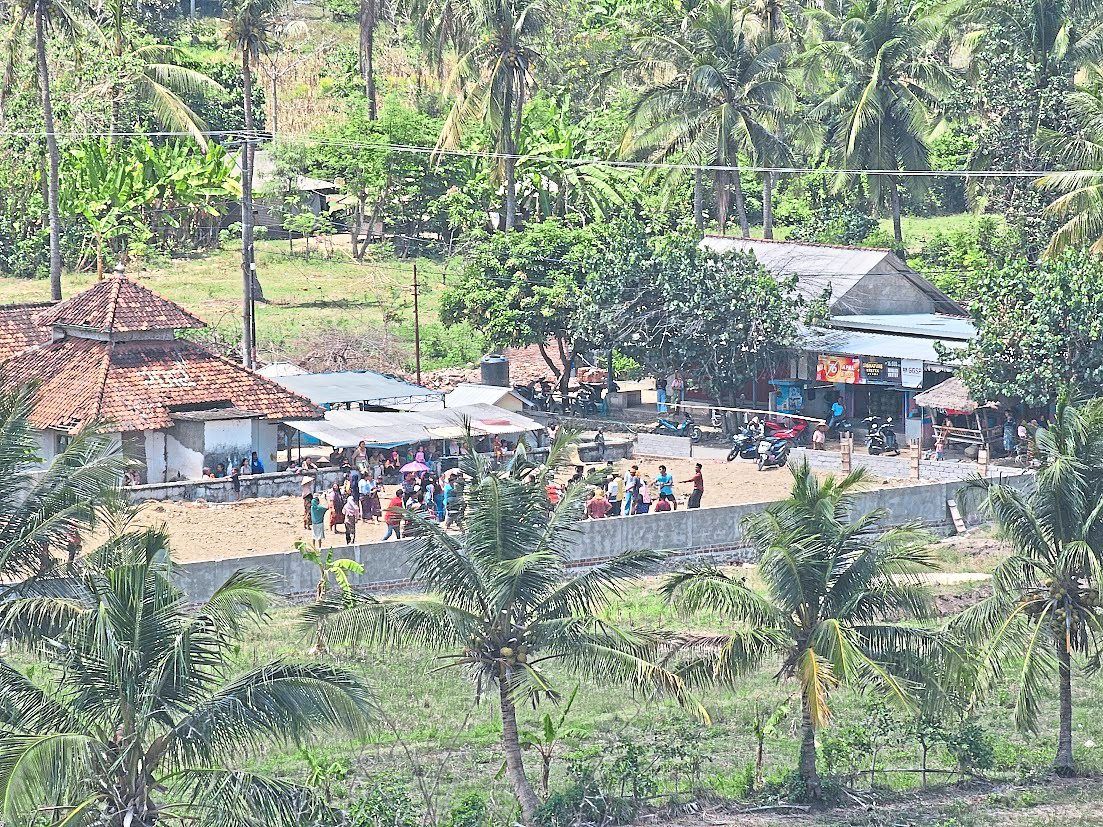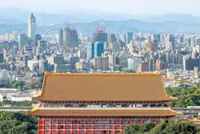The stunning turquoise coastal waters near the Buwun Mas village where investors will build a luxury resort. — Marina Bay City/dpa
From the hills above this quiet coastal village on the Indonesian island of Lombok, the view is postcard-perfect: Turquoise waters curl against a rocky islet, coconut groves shade clusters of houses and children run barefoot along dusty paths.
For generations, life in Buwun Mas has changed little. Now, it may change all at once.
On 149ha of farmland and coastline, developers are pushing ahead with Marina Bay City, a planned billion-dollar resort billed as the “Miami of Indonesia”.
The project, led by Australian investors, promises a marina, luxury villas and hotels – the kind of large-scale tourism venture its backers say could transform one of Lombok’s poorest districts.
“For decades, investors came here, bought land and promised to build,” said Rochidi, the village chief of Buwun Mas.
“But nothing happened. Some plots were abandoned, even classified as neglected land,” said Rochidi, who goes by a single name.
This time, they are actually building, he said. “We are hopeful our people can be involved, as workers, as partners, as beneficiaries.”
Boom or burden?
That mix of hope and caution captures the dilemma facing many Indonesian communities as tourism booms.
With the government eager to replicate Bali’s success elsewhere, projects like Marina Bay offer jobs and infrastructure but also stir familiar fears: of cultural change, environmental damage and locals being left behind.
West Lombok’s Sekotong region, which includes Buwun Mas, has long lagged behind both Bali – just a half-hour flight away – and central Lombok in drawing tourists.
The nearby Mandalika resort, unveiled as part of Indonesia’s “10 New Balis” initiative, has hosted MotoGP races and attracted crowds.
Yet it also became a flashpoint: United Nations experts accused authorities of forced evictions and inadequate compensation for displaced Sasak families, leaving tensions over land unresolved.
Elsewhere in Lombok, similar disputes are emerging. At Tanjung Ann, a crescent-shaped bay near Mandalika known for its surf breaks and fishing grounds, local communities have launched a petition against plans to demolish family-run surf schools, restaurants and food stalls to make way for luxury hotels.
Residents fear they will not survive relocation, with only large commercial operators left to benefit.
Marina Bay’s backers say they are determined to avoid such mistakes. Of the planned 150ha, 35 have already been acquired. Foundations for villas and utilities are rising, and the company expects final permits soon.
The project’s chief executive, Adrian Campbell, said its sustainability features include waste-to-energy systems, solar-powered transport, electric vehicle charging stations and community farms. He promised fair-wage jobs for locals, scholarships for teachers and a commitment to hiring from the village.
“We make decisions jointly with the Buwun Mas community,” Campbell said in an interview. “They know we’re bringing prosperity and creating future employment. This isn’t just temporary construction work. There will be long-term jobs.”
Economic growth, issues
Indonesia’s tourism sector is rebounding sharply after the pandemic, with the government projecting it will contribute 5.5% to gross national product (GDP) in 2025, or roughly US$81bil (RM342.53bil).
International spending is set to surpass pre-pandemic records, while domestic tourism is growing even faster.
In West Nusa Tenggara province, where Lombok is located, authorities hope to welcome 2.5 million tourists this year. Attractions range from the Gili Islands’ coral reefs to waterfalls in central Lombok.
The island’s international airport has expanded to seven million passengers annually and added new flights, including from Malaysia.
For local residents, however, the benefits of tourism have been uneven. In Buwun Mas, some see Marina Bay as a long-awaited chance.
Suparwadi Ashari, a 36-year-old teacher at a local secondary school, described the village’s ambivalence.
“We’ve tried for years to promote our village. But without capital, it’s difficult,” he said. “That’s why many welcome Marina Bay. It feels like an opportunity.”
At the same time, some villagers worry about cultural changes, he said.
“Today, if someone is caught drinking alcohol, they can be expelled from the village. Tomorrow, with more outsiders, it might become normal. That’s what people fear, that our values will be tested.”
Concerns about over-development also spill into online debates. “High-rise buildings are an eyesore and will destroy Lombok. They should be banned. Please learn from Bali and Mykonos (in Greece),” one reader commented on the Bali Sun’s coverage of Marina Bay.
The area is also among the most climate-vulnerable parts of Indonesia, lying on a stretch of coastline exposed to rising sea levels and the threat of a mega-thrust tsunami, said Sulis Angger, director of Koslata, a Lombok-based non-profit organisation.
“The government should not be dazzled by the scale of investment,” he said.
“It must examine whether the proposed development fits with land-use planning, the carrying capacity of the environment, and the potential impacts on the economy, culture, environment and disaster risk.”
Tourism troubles
Elsewhere in Indonesia, the tension between development and conservation is sharper still. On Padar Island in Komodo National Park, a private company’s plan to build hundreds of villas, restaurants and a wedding chapel has triggered protests.
Activists say the project threatens the habitats of the endangered Komodo dragon and undermines community-based tourism.
“Padar Island is not for sale to investors,” said Astra Tandang, coordinator of the Komodo Calls Alliance, which organised the rally this month in Jakarta.
Forestry Minister Raja Juli Antoni said recently that any tourism development in the Unesco World Heritage Site would be strictly regulated to protect the environment and the habitat.
“Even if construction is allowed, it will be under very strict limits – at most 10% of the concession area. And no concrete buildings, only knock-down structures,” he said. – AHMAD PATHONI/dpa






